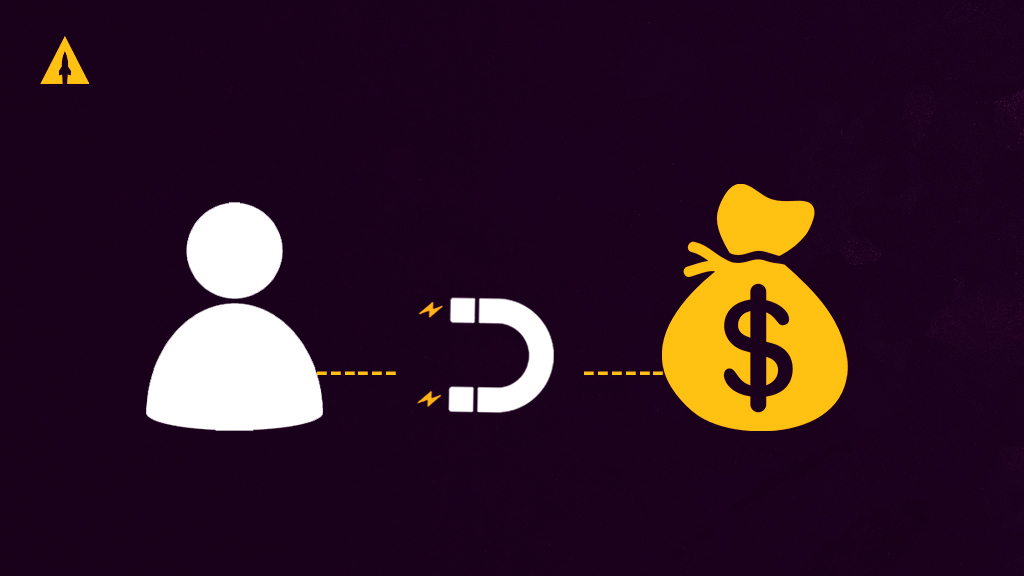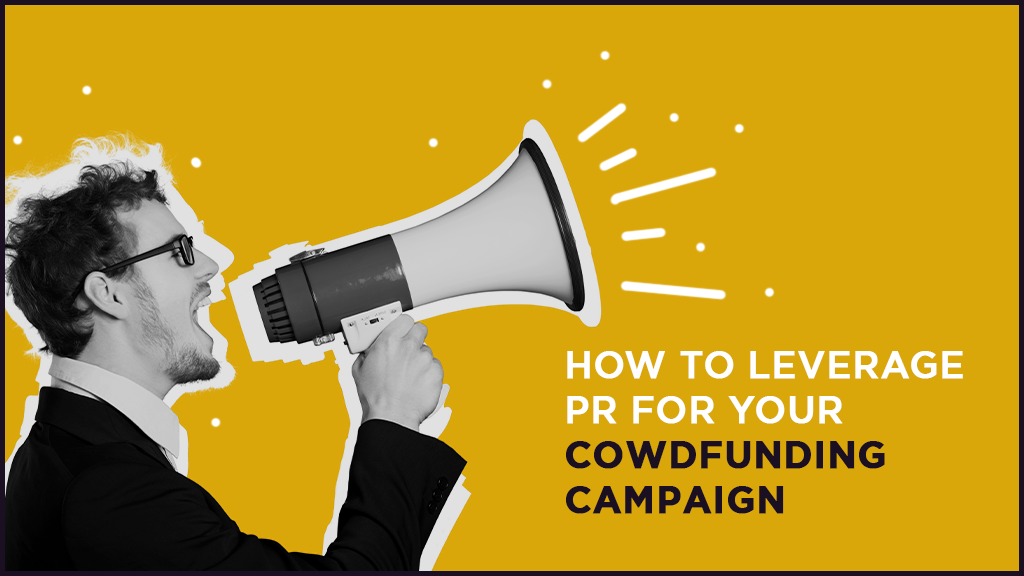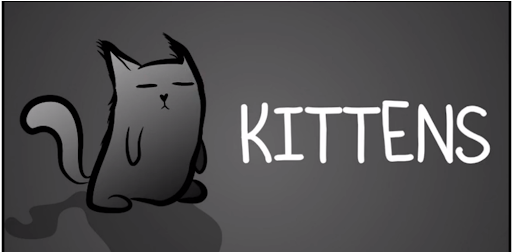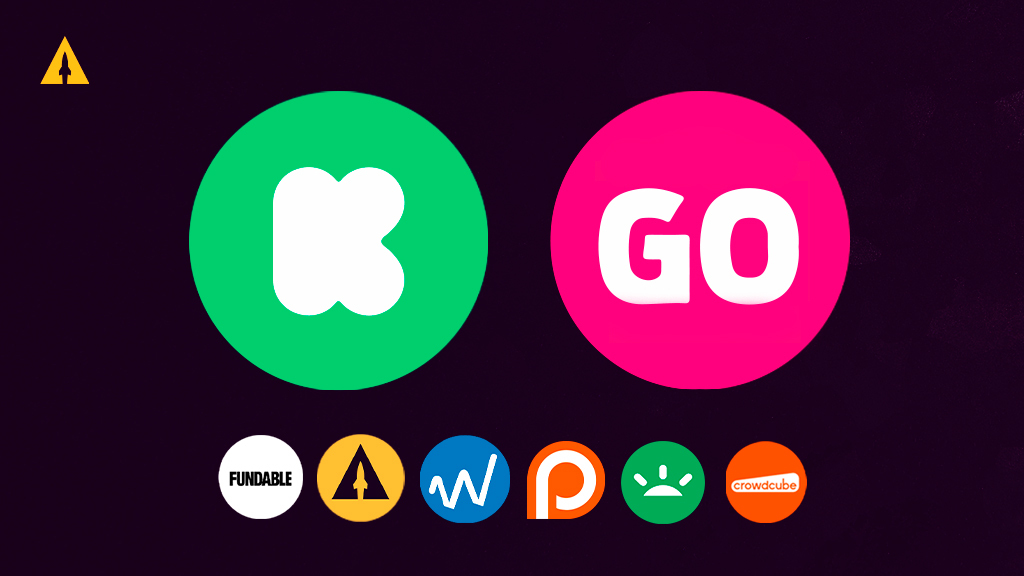
Have you ever wondered why some crowdfunding campaigns take off while others struggle to gain traction? The truth is that success often depends on your marketing skills, and within marketing, your PR credentials especially.
So, perhaps you’re thinking: do I need to hire a PR specialist to ensure my campaign is successful?
The problem is that PR can be expensive. A lot of startup owners struggle with the dilemma of whether to invest in PR or do it themselves. I personally wouldn’t recommend hiring a PR firm unless you have an extra $10-15K to spend, and at that point, perhaps you wouldn’t even need to crowdfund in the first place.
For those who want to have a crack at the PR for your own campaigns, there are thankfully plenty of ways to create a buzz around your Kickstarter campaign without the help of a PR professional.
In this guide, I’ll explain how to leverage PR for your crowdfunding campaign in six easy steps.
Contents
- Key takeaways
- Benefits of using PR for your crowdfunding campaign
- How to leverage PR for your crowdfunding campaign in 6 easy steps
- Famous examples of PR for crowdfunding campaigns
- How to leverage PR for your crowdfunding campaign
- How to leverage PR for your crowdfunding campaign: frequently asked questions
Key takeaways
- Don’t overlook PR: The right PR campaign can help you build lots of credibility. Sure, you can do this through other marketing methods, but PR builds off the back of existing relationships.
Balance PR with social media: Create a great campaign by building relationships with press contacts and influencers, covering all the bases. - Use a multimedia strategy: It’s possible to engage your audience by using multimedia content. Don’t be afraid to get the creative juices flowing as you get stuck into different content channels to express your message.
- Measure and adapt: You should utilize analytics tools to track your progress. Use these tools to set realistic goals and adjust your marketing strategies based on the results you see.
Benefits of using PR for your crowdfunding campaign
PR is what gets the word out there so that people know who you are and what your campaign is. It helps explain why they should contribute to it. Consider your own experiences: would you back a campaign when you didn’t know all the details? Probably not, right?
Enter crowdfunding PR.
Crowdfunding PR involves reaching out to journalists and influencers who have the power to spread the word about your story – the idea is that these people can help you connect with your intended audience. As a result, you can work towards:
- Visibility – By connecting with influencers in your industry and niche, you can reach a ready-made target audience. Journalists, too, have industry connections that they can leverage, using their established relationships to let people know more about your campaign.
- Credibility – Leveraging the credibility of journalists and influencers can benefit you by tapping into the existing connections they have with their audiences. Their viewers know and trust them, so your campaign is more likely to work.
- Success – Those in the know can also help you to create a stronger, more successful strategy. They know the best time to produce coverage, the best way to convey messages to their audience, and so on.
Ultimately, a well-crafted PR strategy can help you succeed by putting a well-explained campaign in front of the right people.
Think of it this way: so much of the content we consume comes in the form of ads. Studies even suggest that people see around 100 ads per day. Most of those are irrelevant, with viewers not even noticing a lot of the advertised media they encounter daily. However, each person may have a collection of journalists or influencers they really trust, whose content they actively seek to consume. If you can push your campaign through these people, your target audience might just listen.

How to leverage PR for your crowdfunding campaign in 6 easy steps
Finally, we get to the good stuff! It’s time to learn how to leverage PR for crowdfunding. In truth, the exact steps and campaign can vary from startup to startup. After all, your uniqueness is what will make your campaign successful in the first place!
Nevertheless, here are my six steps for successfully leveraging PR in crowdfunding.
[
Step 1: Develop a unique angle for your campaign
At the end of the day, PR is a type of marketing, and marketing is nothing if not telling a story. The takeaway? If you want people to listen (and back your campaign), you need to tell them a story.
Your PR story should be compelling and memorable. There are three typical “plots”, revolving around an innovation, a social cause, or a story behind your project. What makes your project unique and worthwhile?
While planning your story, it’s crucial to narrow down a target audience. That way, you can figure out what kind of story appeals to them. Are you trying to inspire them, or tug on their heartstrings?
Crucially, you should make your story concise, and end it with a clear call to action. Make sure you clearly communicate what it is that you’re trying to achieve, your unique selling proposition (USP), and what problem your project solves.
Once you have a story, you can write it out. Make sure you have it in a few different forms, including a value proposition, tagline, and elevator pitch.
Step 2: Create engaging multimedia content
Next, you can start to create the materials you need to market your PR campaign. This is an important aspect of how to leverage PR for your crowdfunding campaign because it’s not just about networking. After all, you have to get the journalists and influencers on board, too.
You can do this through a variety of multimedia content. Consider how you can get amazing product imagery that tells your story, for example. Many brand owners are wary of investing in product photography; after all, is it really a necessary expense? The truth is that, yes, high-quality images are exactly the type of thing journalists and influencers want to see in your brand kit. They can use these images while promoting your product.
Fortunately, you have a few options when it comes to photography:
- Studio: Studio-style photos usually involve a plain background, showing off your product in all its glory and for all angles.
- Location: Photos taken on location show your product in a more natural environment. This can appeal to your target users, because they get a better idea of where they might use the product.
- Action: Action shots are useful for certain product types. They show the product in action, again promoting it to your users in a way that makes sense to them. This can be more expensive, but it’s usually more engaging.
Even with a smaller budget, you can at least create social media pages that allow you to market your campaign.Speaking of social media, it’s still a good idea to create a diverse range of content. It’s best to start with video.
Why? As of 2023, 88% of marketers say that video content is an important part of their strategy. And it makes complete sense. Again, consider your own browsing habits. Have you ever spent hours scrolling TikTok or Instagram Reels, or got sucked into a YouTube rabbit hole? This is standard user behavior for these platforms.
Whether you create short-form content to promote your campaign or long-form videos for platforms like YouTube, video is a fantastic way to showcase your cause. And who knows–you might even go viral! This provides some great details for journalists to include in articles about your campaign.
Consider also creating infographics, which are easily shareable. They showcase something quick and easy that journalists can share to make a brief point.
At this point, it’s also wise to create your PR assets, such as a press kit, media list, and pitch. You can send these assets to journalists to educate them on your brand story or distribute them yourself.
Step 3: Foster community before launch
Never underestimate the value of building a community as this is what can truly set you apart from other campaigns. You can rely on the support of your community to drive your campaign.
To build a community, you’ll need a clearly defined target audience. Consider these questions:
- Who are the people you’re trying to reach?
- How old are they?
- What do they do?
- What are their interests and pain points?
Once you’ve defined your target audience, I recommend targeting them through ads on Meta. You’ll want to send the traffic to a Reservation Funnel. This is where people can not only give their email address to join your community, but put down a $1 deposit to reserve the best deal when you launch. We’ve found those that put down $1 are 30 times more likely to back your campaign, which means they are superfans!
When you’re advertising, remember to leverage your brand story and engage with your followers through comments and discussions.
Step 4: Partner with influencers and niche bloggers
Ah, influencers.
Put aside any negative perceptions about the idea of influencing as a job. Influencers are a powerful force capable of driving serious revenue for businesses across various industries.
There’s a reason why influencer marketing is a $21.1 billion industry! They are able to leverage the connections they build with their audiences. These connections are incredibly important in a world where more and more people are looking for authenticity in their interactions online, choosing to place their trust in chosen individuals rather than faceless companies.
But did you know that there are different types of influencers? They are categorized by their following, which is important for businesses like yours because they attract different price points. The list includes nano, micro, mid-tier, macro, and mega influencers. I usually recommend focusing on micro and nano influencers. These categories have smaller followings, but they tend to have a more engaged community. This typically results in a higher ROI for your campaign.
- Nano: 1000 – 9999 followers ($10-$100 per post)
- Micro: 10,000 – 49,999 followers ($100-$500 per post)
The next step is to start hunting for influencers you want to collaborate with. When making your selection, focus on the three Rs:
- Relevance – targeting influencers with a similar audience to you
- Reach – a decent enough reach for your campaign
- Resonance – a demonstrable ability to drive conversions
You may be wondering how to find influencers to work with. There are two easy ways to search for influencers:
- Make sure you search keywords and relevant hashtags on various social media platforms to encounter various influencer profiles.
- Or, alternatively, you can check out the “Brands Meet Creators” service, which connects brands with influencers in an easy online platform.
Reach out if you see an influencer you think you might want to work with – you can do this via direct message (DM) or with an email if that’s an option. Ask if they’re open to collaborating, and send over any pitches. By the way, it pays to be respectful–the way you word your message is important!
Step 5: Leverage events for PR exposure
Remember, PR marketing isn’t just about influencers; it’s also about the press.
At this point, don’t overlook the importance of attending in-person events, as it’s often all too easy to jump on a Zoom call or a Google Meet. A face-to-face meeting is just so much more personal! I’ve found from my own experience that personalized meetings can drive a lot more business than Zoom calls since you can really lean into your personality to build that all-important rapport.
That said, you can do one better than emailing journalists to invite them to a coffee meeting. Instead, attend industry-relevant events to meet the press in their element. Try conferences, seminars, and other launch events.
Even if there isn’t one nearby, you can attend online webinars. Or, if you’re really ambitious, create your own event!
Mastering the art of event planning can take you far if you want to learn how to leverage PR for your crowdfunding campaign.
And yes, I understand approaching people in person can feel intimidating, but trust me – the payoff is often worth it. Just be careful not to come on too strong, though, by immediately delivering your elevator pitch. Practice making small talk and offering to help journalists with what they’re already working on. Over time, building these relationships can really help you out.
Step 6: Implement a strategic follow-up plan
Launching your PR strategy is one thing, but having a strategy isn’t enough to ensure success – you need a follow-up plan that ensures that you stick to your plan. I often find that a plan will help you keep putting in the work even when it gets tough.
There are two key points to consider in your follow-up plan:
- New content
- Measuring progress
The first is relatively easy. It’s about maintaining those connections with your press contacts and your audience. Keep posting on social media, providing updates on funding progress, stretch goals, or behind-the-scenes content. Plus, keep in touch with your media contacts, following up, and securing coverage. Journalists won’t always post your press release overnight–you might need to chase them a few times.
The second part is about measuring your results. Ideally, you should have goals that make it easy to track your progress. This might be a monetary goal or a number of subscribers you want to reach. Actively monitor your progress throughout the campaign, and adjust your strategy as needed.
Famous examples of PR for crowdfunding campaigns
You should now have a better idea of how to leverage PR for your crowdfunding campaign. Still, it’s always handy to take inspiration from examples of success stories so that you can get a feel for what success looks like.
Here are three amazing examples of PR campaigns in crowdfunding.
Example 1: Pebble Time smartwatch
The Pebble smartwatch is a Kickstarter original. Back in 2015, 78,741 people backed the funding for the Pebble Time watch, and that’s partly due to the PR campaign. This was Pebble’s second Kickstarter run, and they managed to build on the success from the first round.
Pebble used a mixture of engaging updates, behind-the-scenes looks into the development process, and engaging with their existing community from the first funding campaign. By unveiling feature announcements (such as smart-straps) throughout the campaign, they kept the audience engaged and excited.
The Kickstarter campaign attracted massive attention, including in publications like The Guardian, The Verge, and CNBC. A lot of eyes land on these huge publications, so it’s no wonder Pebble managed to pick up so much steam!
The takeaway – Don’t be afraid to leverage previous success if it’s a part of your brand story; you don’t always have to be down and out to start a crowdfund. Also, never underestimate the power of community engagement.

Example 2: Exploding Kittens
The Exploding Kittens card game is one of the most famous examples of a Kickstarter.
Let’s start at the beginning. This card game stands out due to its humorous, unique concept. Its other USP is the use of artwork from a popular webcomic artist, The Oatmeal.
The company played into this during its PR campaign with hilarious illustrations and engaging videos used to promote its unique value proposition. Exploding Kittens is fantastic at branding, and they ensured that they used this distinct tone in all of their marketing materials. They focused on creating content that was naturally viral.
Take this YouTube video, for example, posted by Matthew Inman (The Oatmeal) himself. This sort of viral content is what kicked the campaign off. Just look at those comments! By engaging his already established community, Exploding Kittens managed to gather a huge number of backers.
And it worked! In its overall campaign, it received 219,382 backers. Their initial goal of raising $10,000 was achieved in just eight minutes. In the end, they raised over $1 million.
The takeaway – Your brand story is an important part of your PR campaign. Find out what makes you unique and lean into it, using it to create engaging multimedia content.

Example 3: The Veronica Mars movie project
Let’s look at the inspirational Veronica Mars Movie Project, in which fans managed to resurrect a beloved TV show. The show’s creator, Rob Thomas, leveraged the star power of leading actress Kristen Bell to mobilize a passionate fan base.
The project tapped into nostalgia and the unfulfilled desires of the show’s fans. In this way, emotion drove the campaign. They used PR to create a movement rather than just a funding campaign, demonstrating the power of influencer partnerships and emotional storytelling.
Again, this campaign is testimony to what happens when you build a community. Rather than just getting picked up by big publications, this campaign was picked up by Reddit, a site with millions of engaged users. Excited fans discussed the campaign in the r/veronicamars forum, building a collective buzz around the campaign.
Thomas set an original goal of $2 million to shoot a housebound murder mystery. In the end, they raised over $5.7 million.
The takeaway – Don’t neglect the power of appealing to your audience’s emotional side and tell a story that resonates. This holds true even if you are going to hire influencers or engage celebrities like Kristen Bell; they need to be on board with your emotional narrative.
How to leverage PR for your crowdfunding campaign
My one-sentence summary – good storytelling is how you raise funds for your project.
That’s how to leverage PR for your crowdfunding campaign. Having a solid brand story will inevitably help you pitch your project and get people on your side. This truth applies both to world-weary journalists who’ve seen it all before and your average social media user.
But nobody likes to read the same story over and over. What is going to differentiate your story from the others? I encourage you to think about how to put your own spin on things. After all, good PR is about highlighting your project’s unique attributes.
And, if you’re looking for support to launch a successful Kickstarter campaign, our team at LaunchBoom can help.
Are you ready to unlock the PR potential of your Kickstarter campaign? Schedule a consultation today to learn more.
How to leverage PR for your crowdfunding campaign: frequently asked questions
How early should I start PR for my crowdfunding campaign?
The earlier you start, the better chance you have of success. After all, planning is bound to help you. By initiating efforts well in advance, you can build anticipation with your community, engage potential backers, and secure ample media coverage ahead of your launch. Once you have a working prototype and a set launch date, I recommend reaching out to press and influencers.
Can social media replace traditional PR in a crowdfunding campaign?
It’s best not to think of social media and PR as separate entities. Ideally, social media and traditional PR should serve complementary roles in crowdfunding. While social media is amazing for engagement and community building, traditional PR offers a broader reach and provides credibility.
How do I measure the success of my PR efforts?
Set yourself goals before launching your PR campaign so that you can measure your progress as you go; ideally, they should be goals that are measurable. Then, tools like Google Analytics and social media insights can be used to track any and all measurable metrics. Learning how to leverage PR for your crowdfunding campaign is one thing, but you also need to know how to keep track of your results, so make sure you keep an eye on these numbers.



